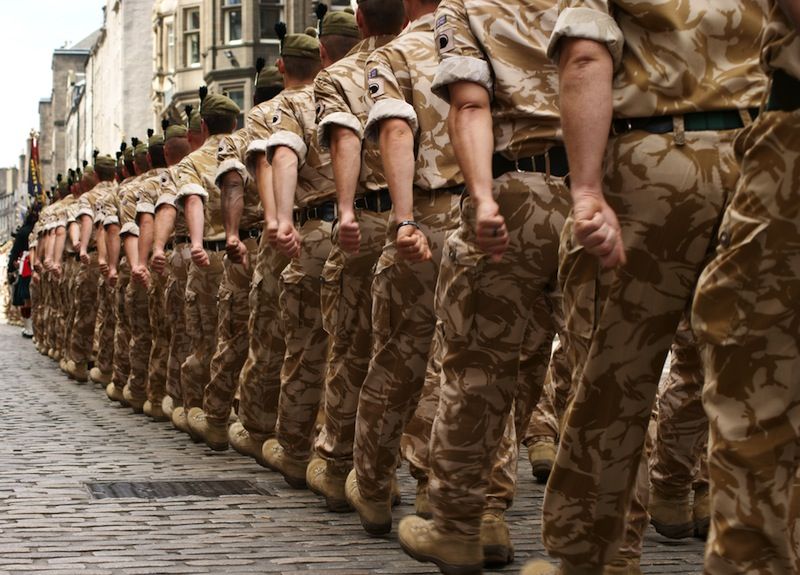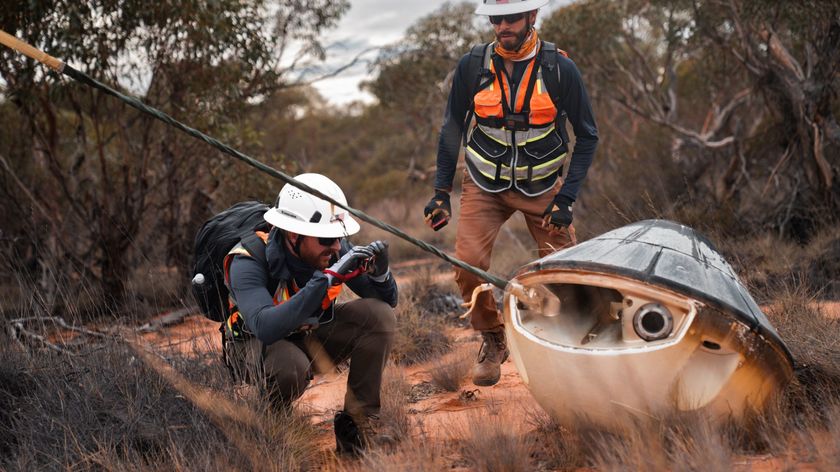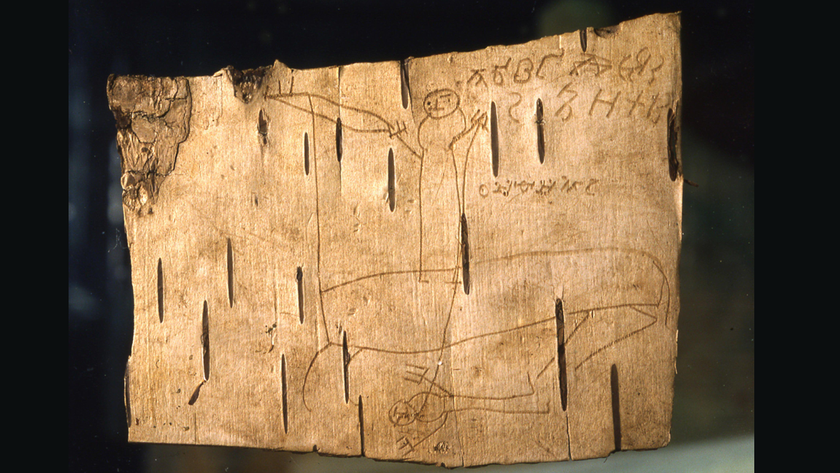Ten-Hut! Why Soldiers March in Unison

From North Korea to the United States, militaries display their strength with synchronized parades. Now, new research shows that when soldiers march in unison, it not only intimidates enemies, but also gives the soldiers a confidence boost.
In a new study, men who were asked to walk in unison judged their potential opponents as less formidable than men who didn't walk in unison. This tendency could contribute to increased aggression among men walking in unison, said Daniel Fessler, an evolutionary anthropologist at the University of California, Los Angeles, and one of the researchers on the new study.
"If you know the other party in your assessment is weaker than your party, if there is a conflict of interest [or] a provocation, you're much more likely to aggress against them," Fessler told Live Science. [7 Technologies That Transformed Warfare]
In unison
Humans find synchronous behavior very rewarding, whether people are performing religious rituals or doing "the wave" at football games, Fessler said. Animals act in unison, too. For example, studies have found that dolphin groups that jump and twirl together usually win in conflicts with other groups that are poorly synchronized.
Fessler and his colleagues conducted their most recent study as part of a long-running Air Force-funded project on how people make decisions in situations of potential conflict. Their previous work found that men in groups evaluate potential threats as less dangerous than single men do.
In the new study, the researchers recruited 96 men and asked them to walk 800 feet (244 meters) alongside another man, who was actually an employee working with the researchers. In half of the cases, the men were told to walk normally. In the other half, they were asked to walk in unison with the other man.
Sign up for the Live Science daily newsletter now
Get the world’s most fascinating discoveries delivered straight to your inbox.
Judging threats
After walking, the men were shown a mug shot of an angry male face. The researchers asked them to estimate the man's height, his overall body size and his muscularity.
The men who had synchronized their walk rated the angry man as shorter and smaller than the men who had walked naturally, Fessler and his colleagues reported today (Aug. 26) in the journal Biology Letters.
"Modern armies all around the world have drill practice, where they march around even though marching around has nothing to do with fighting," Fessler told Live Science. The new study suggests that the act of marching itself makes the soldiers see potential enemies as less frightening.
He compared the findings to the behavior of two packs of coyotes howling at one another across the hills of Southern California.
"The coyotes are screaming at the coyotes on the other side of the hill, but they're also patting each other on the back," Fessler said. "The message is, 'We can do this. We're motivated and capable, and we have it together.'"
Marching in unison may give armies a confidence boost, but synchronized behavior can have a dark side, Fessler said. Recent clashes between protestors and riot gear-clad police in Ferguson, Missouri, have raised questions about the militarization of police departments. If police are training and moving in unison like soldiers, Fessler said, it may give them an "us-against-them" mentality that could encourage, not discourage, violence.
"What you don't want to have happen is police training in formation, moving in formation and then confronting peaceful protesters with the mind-set, 'We can take these guys,'" Fessler said.
Follow Stephanie Pappas on Twitter and Google+. Follow us @livescience, Facebook & Google+. Original article on Live Science.

Stephanie Pappas is a contributing writer for Live Science, covering topics ranging from geoscience to archaeology to the human brain and behavior. She was previously a senior writer for Live Science but is now a freelancer based in Denver, Colorado, and regularly contributes to Scientific American and The Monitor, the monthly magazine of the American Psychological Association. Stephanie received a bachelor's degree in psychology from the University of South Carolina and a graduate certificate in science communication from the University of California, Santa Cruz.











